Hiking and Trekking
Hiking and trekking in Bhutan are among the most captivating activities for adventure enthusiasts. With its vast, unspoiled landscapes and the majestic backdrop of the Himalayas, Bhutan offers treks that vary in difficulty, making it suitable for both novices and experienced trekkers. Here’s a closer look at what makes hiking and trekking in Bhutan a must-do:
.jpg)
-
Diverse Trails: Bhutan’s trekking routes cover a range of environments, from lush subtropical jungles to rugged alpine mountains. Popular trails like the Druk Path Trek offer manageable challenges for families, while the Jomolhari Trek appeals to those seeking a more strenuous adventure. Each route provides unique opportunities to observe Bhutan’s natural beauty, including pristine lakes, high-altitude pastures, and stunning panoramic views.
-
Cultural Interaction: Many treks pass through remote villages and ancient monasteries, offering trekkers a chance to interact with the local Bhutanese communities. This interaction allows for a deeper understanding of Bhutanese culture and traditions. Trekking becomes not just a physical journey but also a cultural immersion.
-
Flora and Fauna: Trekking in Bhutan also provides opportunities for wildlife watching. The country is known for its conservation efforts and is home to several rare species like the snow leopard, Bhutan takin, and the black-necked crane. The diverse ecosystems ensure that each trekking route offers a different experience in terms of flora and fauna.
-
Spiritual Experience: Many treks in Bhutan are not just hikes but spiritual journeys. Trails often include visits to sacred sites, ancient temples, and monasteries. The famous Tiger’s Nest Monastery (Paro Taktsang) is a highlight for many trekkers, perched dramatically on a cliff face.
-
Eco-friendly and Sustainable: Bhutan’s approach to tourism and trekking emphasizes sustainability and environmental conservation. The government’s strict policies ensure that trekking impacts are minimized, preserving the country’s natural beauty for future generations.
-
Organized Tours: To trek in Bhutan, foreigners must go through registered tour operators like Relax Getaways. These companies provide all-inclusive packages that cover guides, porters, food, and lodging, ensuring a safe and well-organized experience. This regulation helps maintain the quality and safety of the trekking experience while ensuring that it contributes positively to the local economy and conservation efforts.
Whether you are looking for a serene hike through wooded landscapes or a challenging trek across high-altitude mountain passes, Bhutan offers an array of options that promise breathtaking views and enriching experiences. Each step taken on these ancient paths is a step into the heart of Bhutan’s magical allure.
Cultural Sightseeing
Cultural sightseeing in Bhutan offers a profound window into the kingdom’s rich heritage and vibrant traditions, making it a central element of any visit. From majestic dzongs (fortresses) to sacred monasteries perched on dramatic cliffs, Bhutan’s cultural landmarks tell the story of a nation deeply rooted in Buddhist spirituality and historical preservation.
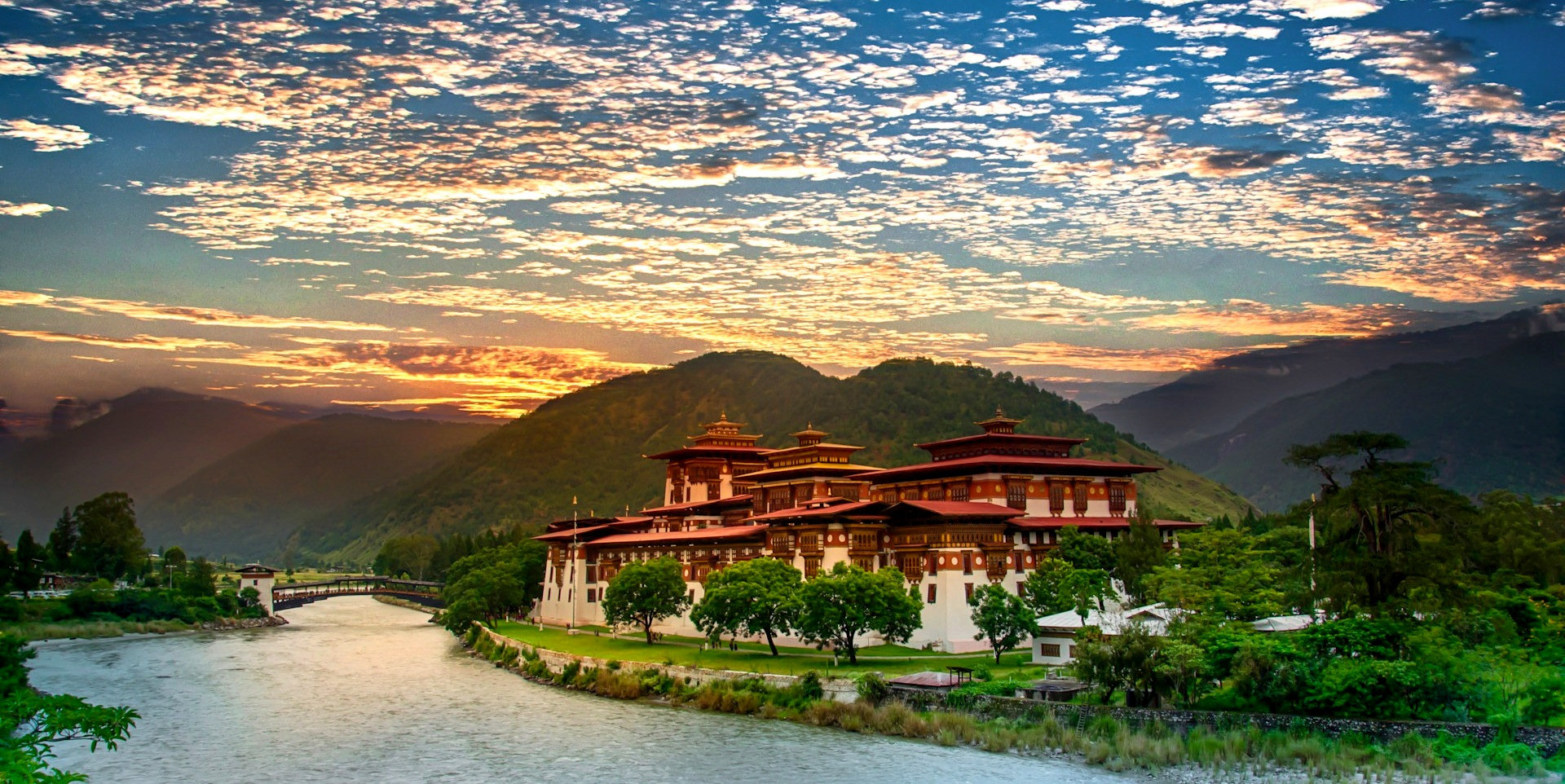
Key Highlights of Cultural Sightseeing in Bhutan
-
Paro Dzong: Also known as Rinpung Dzong, this fortress serves as both a monastic and administrative center. It's one of the finest examples of Bhutanese architecture, featuring intricate woodwork and beautiful wall paintings that depict Buddhist lore. The dzong is also the setting for the annual Paro Tshechu, a religious festival that attracts both locals and tourists who come to witness the vibrant mask dances and cultural displays.
-
Punakha Dzong: Often considered the most beautiful dzong in Bhutan, Punakha Dzong is located at the confluence of the Pho and Mo Chhu rivers. It serves as the winter home for the monastic body. The dzong's structure is a stunning example of Bhutanese craftsmanship, with its elaborate wood carvings and intricate paintings.
-
Taktshang Monastery (Tiger’s Nest): Perched on the side of a cliff 900 meters above the Paro valley floor, Taktshang Monastery is Bhutan’s most iconic landmark and a spiritual hub. The site is associated with Guru Rinpoche, who is said to have flown here on the back of a tigress. A visit involves a challenging hike but rewards with spectacular views and a serene atmosphere.
-
Thimphu Tshechu: Held in the capital, Thimphu, this is one of the biggest festivals in Bhutan. Visitors can experience traditional Bhutanese culture through colorful dance performances, music, and religious art forms. It's an excellent opportunity for cultural immersion and to see Bhutanese in their finest traditional attire.
-
National Museum of Bhutan: Located in Paro, this museum is housed in an ancient watchtower and offers a deep dive into Bhutanese culture and history. Its extensive collection includes traditional costumes, folk art, religious statues, and artifacts, providing insights into the Bhutanese way of life.
-
Folk Heritage Museum: Situated in Thimphu, the Folk Heritage Museum is dedicated to connecting visitors with the Bhutanese rural past through exhibits of household objects, tools, and equipment. The museum displays mimic a traditional rural household and demonstrate how rural Bhutanese live, including their daily activities, religious practices, and more.
-
Arts and Crafts: Bhutan takes great pride in its artistic traditions, which include weaving, painting, wood carving, and sculpture. Visiting the local arts and crafts schools or markets can provide insight into these ancient techniques and the opportunity to purchase unique handmade souvenirs.
-
Engaging with Local Culture: Cultural sightseeing in Bhutan also means engaging with the local people and their customs. Travelers are often touched by the warmth and hospitality of the Bhutanese people. Participating in a local meal, attending a community event, or simply interacting with locals during sightseeing can enrich the travel experience significantly.
-
Sustainable and Respectful Tourism: It's important for visitors to approach cultural sightseeing with respect for local traditions and practices. Bhutan emphasizes sustainable tourism, which respects and preserves its cultural values. As a visitor, engaging respectfully with these cultural sites ensures their preservation for future generations.
Exploring Bhutan’s cultural sites offers a mesmerizing experience that combines spiritual enrichment with breathtaking beauty, allowing visitors to step back in time and experience the Kingdom’s preserved heritage firsthand.
Archery and Dart Demonstrations
In Bhutan, archery and darts are not just sports; they are integral parts of the national culture, infused with tradition, community, and celebration. Archery is the national sport of Bhutan, and dart (Khuru) demonstrations are also popular and widely practiced. These activities offer a unique glimpse into the Bhutanese way of life and provide an engaging cultural experience for visitors.
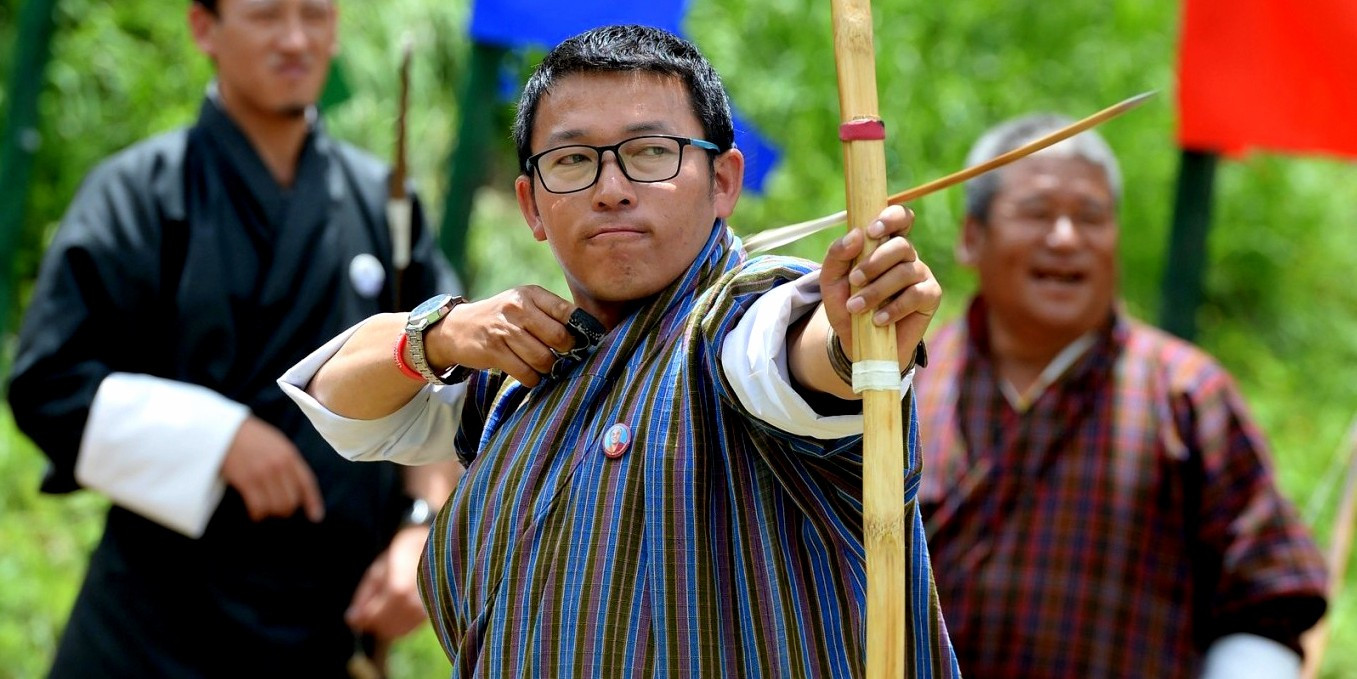
-
Archery in Bhutan: Archery competitions in Bhutan are vibrant and festive events where entire communities come together. Traditional Bhutanese archery differs significantly from Olympic archery. The targets are much smaller, typically about 30 centimeters in diameter, and are placed over a considerable distance of about 145 meters from the archers.
-
Cultural Significance: Archery in Bhutan is more than just a sport—it's a social event filled with music, dancing, and food. Competitions are often accompanied by a lot of good-natured teasing and humor among competitors, and it is as much about skill as it is about camaraderie and tradition.
-
Festivals and Tournaments: Archery tournaments are common during local festivals and national holidays, making these times particularly interesting for visitors. These events provide an opportunity to see Bhutan’s traditional bamboo bows in action, although compound bows are becoming more popular among younger archers.
-
Dart (Khuru) Demonstrations: Khuru is another traditional Bhutanese sport that is somewhat akin to darts. It involves throwing heavy wooden darts with a sharp, metal tip over a distance of about 20 meters toward a small target placed on the ground.
-
Gameplay and Rules: The game is usually played in teams, and like archery, it features a lot of banter and jest among participants, making it a lively and entertaining spectacle. Scoring is based on how close the dart lands to the target, with points awarded for hitting the target and additional points for particularly skillful throws.
-
Cultural Festivities: Participating in or watching a Khuru match gives visitors a chance to engage with local traditions actively. These matches are often part of larger gatherings and celebrations, providing a holistic view of the festivity and communal spirit that characterize Bhutanese culture.
-
Experiencing Archery and Dart Demonstrations: For tourists interested in experiencing these sports firsthand, many tour operators in Bhutan, including those specializing in cultural tours like Relax Getaways, offer visitors the chance to watch or even participate in archery and dart demonstrations. These activities are not only fun but also allow visitors to interact with locals in a meaningful and culturally immersive environment.
-
Interactive Opportunities: Visitors can try their hand at both archery and darts under the guidance of local experts. This interaction not only provides insight into the technical aspects of the sports but also delves into their cultural significance, often accompanied by stories and anecdotes that enrich the experience.
Participating in or observing these traditional sports offers a unique educational and entertaining experience, highlighting the rich cultural tapestry of Bhutan. For anyone traveling to Bhutan, experiencing its traditional sports is a must-do activity that provides deeper insight into the Bhutanese way of life and their celebratory traditions.
Festival Participation
Participating in a festival in Bhutan is a vivid and unforgettable way to experience the rich tapestry of Bhutanese culture and tradition. These festivals, known as "Tshechu," are annual religious events held in various temples, monasteries, and dzongs across the country. They are an integral part of Bhutanese life, providing the local communities with a spiritual occasion for prayer, rituals, and social gatherings, while also serving as a major attraction for tourists.
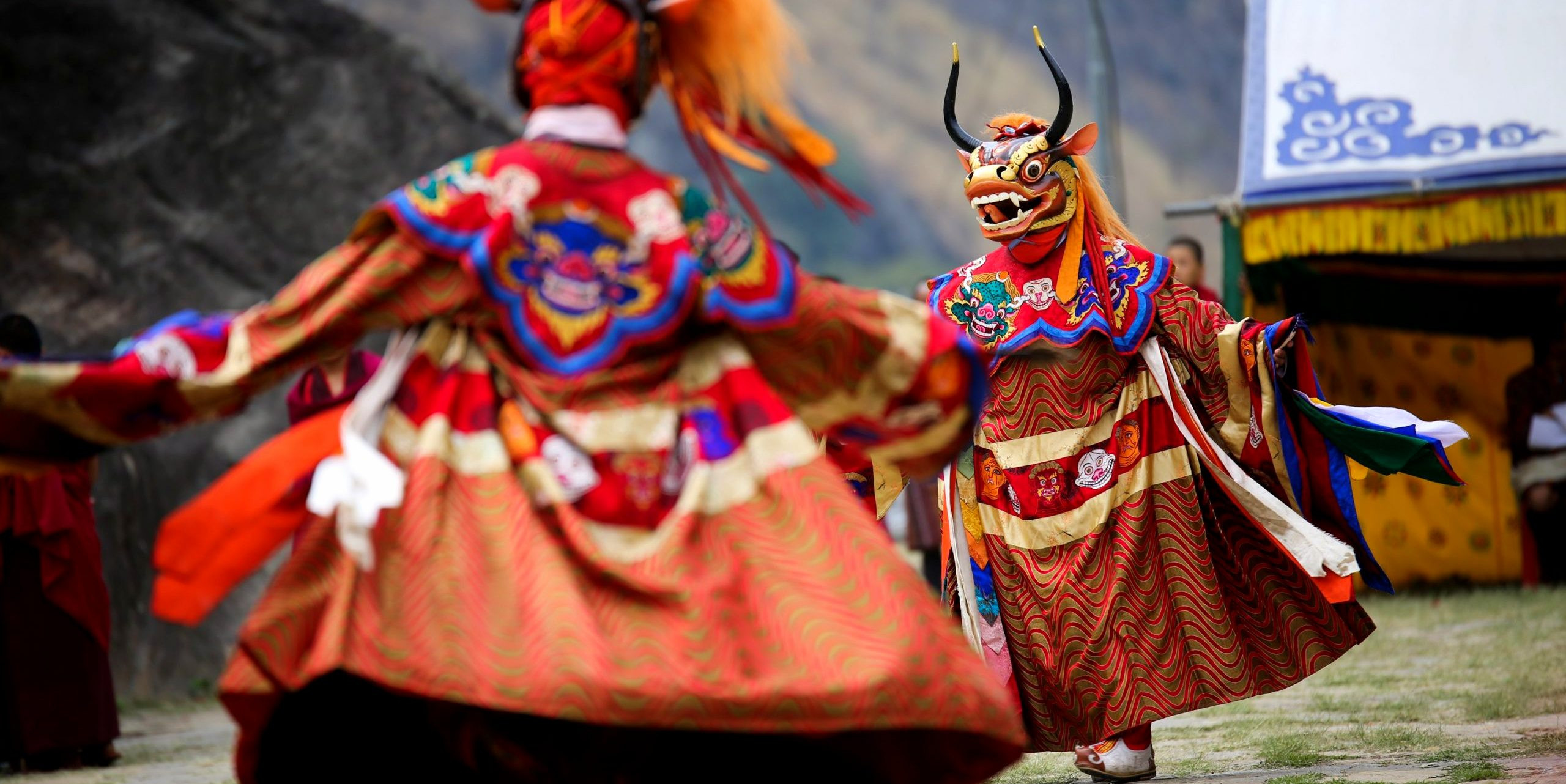
-
Understanding Tshechus: Tshechus are celebrated on the tenth day of a month of the lunar Tibetan calendar, varying slightly each year. These festivals honor Guru Rinpoche (Padmasambhava), who brought Buddhism to Bhutan in the 8th century. Each festival typically lasts from three to five days, featuring a wide array of activities including:
-
Masked Dances: These are the highlights of any Tshechu, performed by monks and laymen wearing elaborate silk costumes and masks. Each dance narrates different Buddhist moral tales known as cham dances, which are believed to bestow blessings upon the watchers and teach them about the Buddhist doctrine.
-
Religious Processions: Religious relics are often paraded around in a procession that includes monks and community leaders. This is considered a sacred act and is believed to bring spiritual merit to those who witness it.
-
Local Music and Art: Tshechus are also a display of Bhutan’s rich culture in terms of music, art, and craft. Local artisans and musicians participate actively, showcasing their skills, making the festival a colorful and vibrant affair.
Popular Festivals for Participation
-
Paro Tshechu: One of the most famous Tshechus, held in the Paro Dzongkhag, is known for the unfurling of the giant Thongdrel—a large tapestry of Guru Rinpoche. The sight of the Thongdrel at dawn is said to cleanse the viewer of sin.
-
Thimphu Tshechu: As one of the largest and most popular Tshechus, it is held in Bhutan’s capital and attracts the highest number of tourists. The festival ground vibrates with life as locals and tourists gather to witness the grand spectacle.
-
Punakha Drubchen and Tshechu: This festival re-enacts the 17th-century battle against Tibetan forces, portraying the Bhutanese victory which is integral to Punakha’s history. The dramatic representations and historical re-enactments add a unique dimension to this festival.
Why Participate in a Bhutanese Festival?
-
Cultural Immersion: Participating in a festival offers an immersive experience into Bhutanese spiritual life that goes beyond typical tourist activities. It allows visitors to experience firsthand the living culture of Bhutan as it has existed for centuries.
-
Community Interaction: Festivals provide a chance to interact with locals in a communal and festive setting, fostering a deeper understanding and connection with the Bhutanese people and their way of life.
-
Photographic Opportunities: For those interested in photography, Tshechus offer unparalleled opportunities to capture the vibrancy and emotion of Bhutanese cultural life through its dances, costumes, and rituals.
Tips for Visitors
-
Dress Respectfully: When attending a festival, it is important to wear modest clothing that covers shoulders and legs as a sign of respect in these religious events.
-
Follow Local Etiquette: Always ask for permission before taking photographs, especially during religious ceremonies.
-
Plan Ahead: Accommodations and travel facilities can get booked quickly around popular festival times, so it’s wise to plan your trip well in advance.
Participating in a Bhutanese festival is a profound way to connect with the spirit of this Himalayan kingdom, offering insights not only into its religious practices but also into the communal essence of Bhutanese life.
Wildlife Watching
Bhutan, with its protected national parks and commitment to environmental conservation, offers an exceptional opportunity for wildlife watching. This small Himalayan kingdom, known for its commitment to maintaining a sustainable environment, harbors a variety of ecosystems that are home to some unique and endangered species. Here’s a guide to help families explore Bhutan’s rich biodiversity.
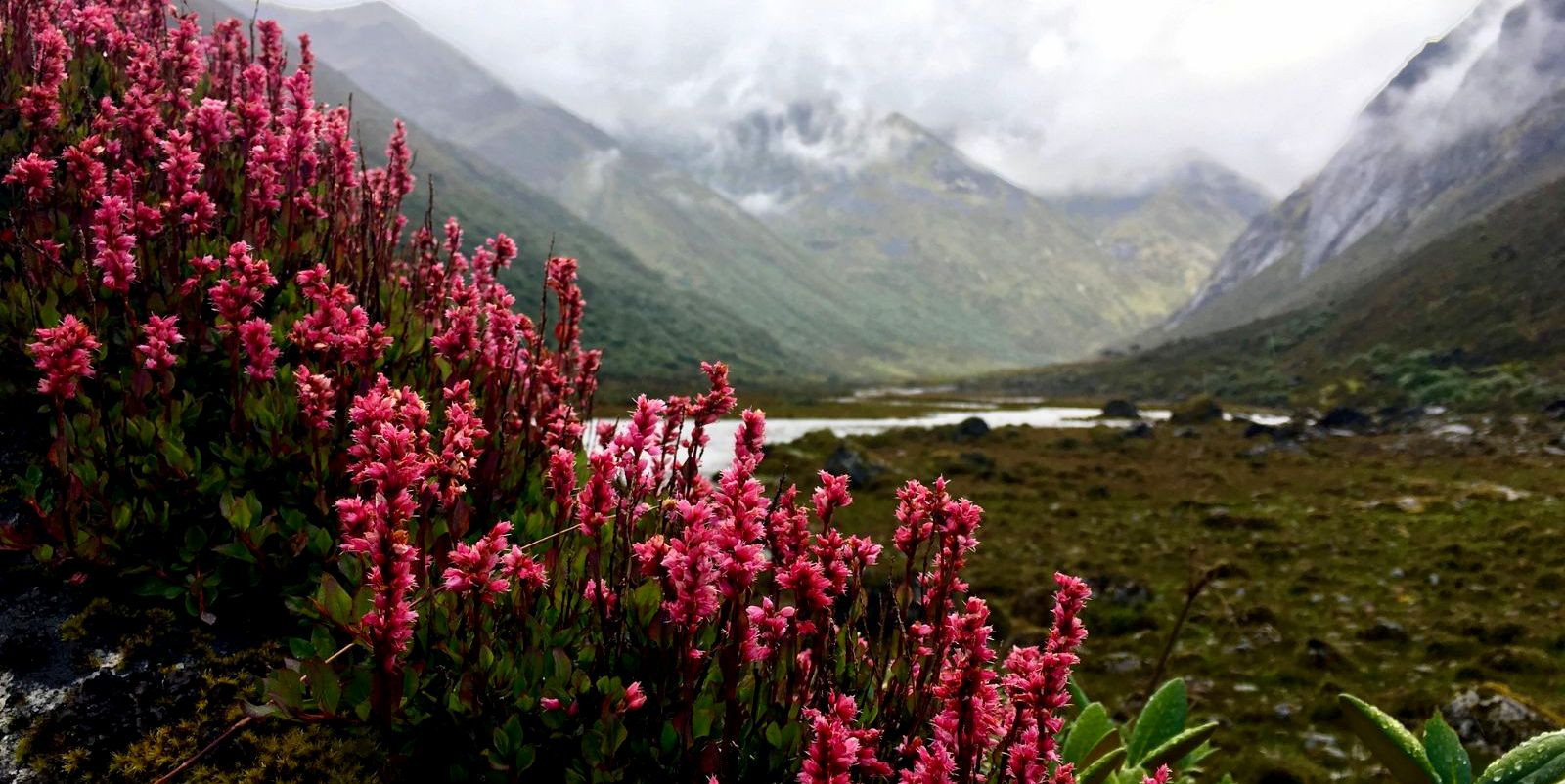
Key Destinations for Wildlife Watching
-
Jigme Dorji National Park: This national park is one of the largest in Bhutan and a hotspot for wildlife enthusiasts. It is home to iconic species such as the snow leopard, takin (Bhutan’s national animal), red panda, and Himalayan black bear. The park’s diverse habitats, from alpine meadows to subtropical forests, make it a prime location for spotting a wide range of fauna.
-
Royal Manas National Park: Known as the conservation jewel of Bhutan, Royal Manas National Park offers one of the richest biodiversity areas in the eastern Himalayas. It is an excellent place to observe the Bengal tiger, Asian elephant, gaur, and the rare golden langur. The park also provides eco-tourism and camping experiences that can be a thrilling part of any family adventure.
-
Phobjikha Valley: This valley is a significant wintering ground for the black-necked cranes that migrate from the Tibetan Plateau. Observing these elegant birds, especially during their arrival in late autumn, is a highlight for many visitors. The valley also hosts the annual Black-Necked Crane Festival, celebrating the conservation of this majestic bird, which can be a captivating experience for children and adults alike.
What Makes Wildlife Watching Special in Bhutan
-
Sustainable Practices: Bhutan’s approach to tourism and wildlife conservation prioritizes minimal environmental impact and promotes conservation education, making wildlife watching here not only enjoyable but also ethical.
-
Guided Tours: Professional guides can enhance your wildlife watching experience by providing in-depth information about the species and their habitats. These guides are often trained in conservation and can help spot and identify wildlife, which might be difficult for untrained eyes.
-
Diverse Ecosystems: The varied climates and ecosystems in Bhutan—from high-altitude alpine zones to lush subtropical forests—allow for the observation of a diverse array of wildlife.
Tips for Family Wildlife Watching
-
Best Time to Visit: The best times for wildlife watching in Bhutan are during the spring (March to May) and fall (September to November), when weather conditions are favorable and animals are often more visible.
-
Preparation: When planning wildlife excursions, make sure to wear appropriate clothing, carry binoculars for better viewing, and pack snacks and water for longer trips.
-
Respect Wildlife: Always maintain a safe and respectful distance from wildlife. Avoid loud noises or sudden movements that could stress the animals.
-
Incorporate Education: Use wildlife watching as an educational tool for children, teaching them about different species, their roles in the ecosystem, and the importance of conservation.
Wildlife watching in Bhutan is an activity that combines adventure with education, making it perfect for families looking to explore nature and learn about environmental conservation together. This experience not only entertains but also instills a deeper appreciation for wildlife and the importance of preserving our natural world.
Arts and Crafts Workshops
Bhutan, with its deep-rooted traditions and rich cultural tapestry, offers an array of arts and crafts that reflect its spiritual and artistic heritage. Participating in arts and crafts workshops can be a highlight for families visiting Bhutan, providing not only a fun, hands-on experience but also a deeper understanding of the Bhutanese way of life. Here’s what families can expect from engaging in these creative workshops.
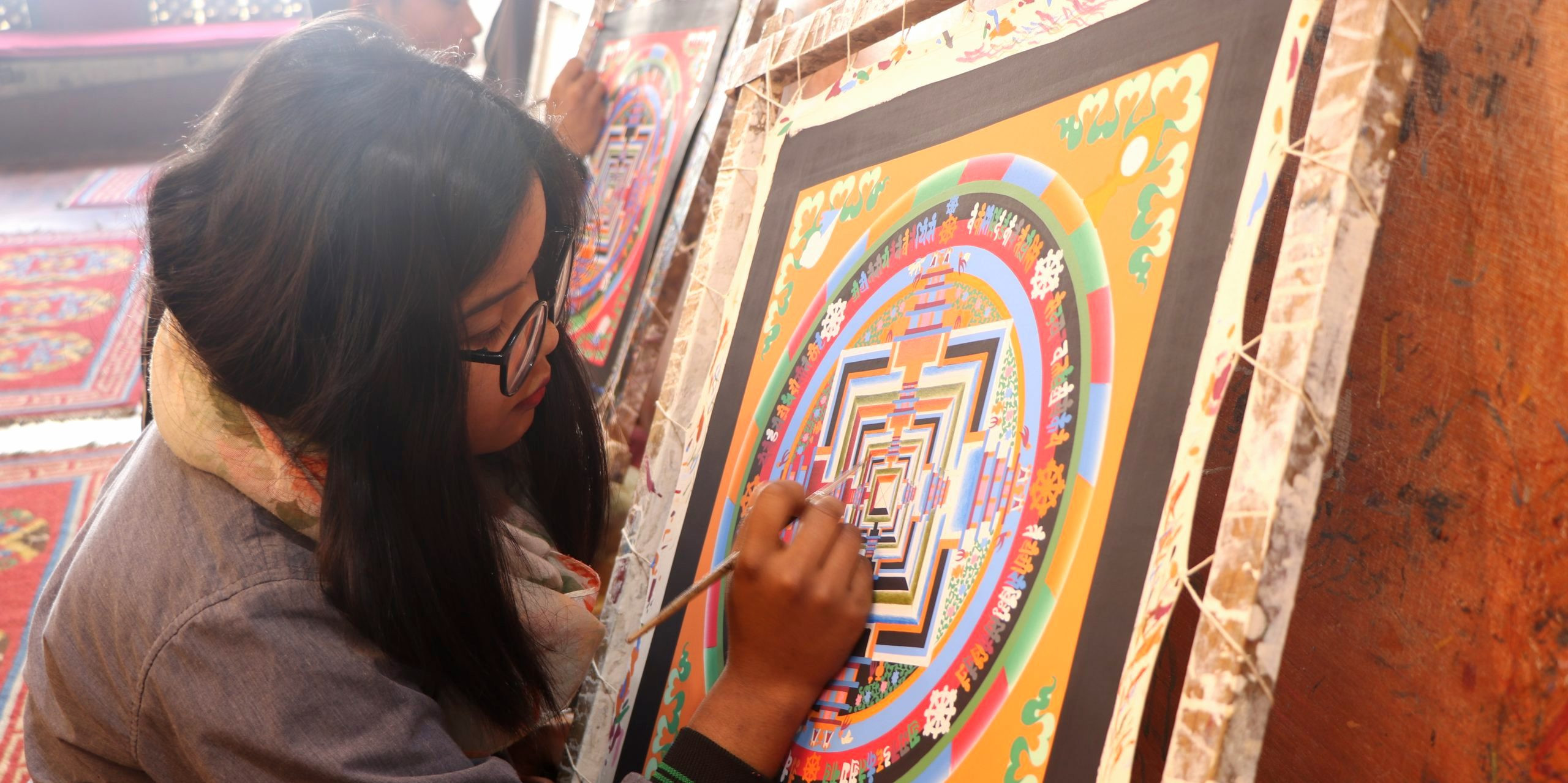
Popular Arts and Crafts in Bhutan
-
Thangka Painting: Thangka are intricate and colorful paintings on cotton or silk that depict Buddhist deities, scenes, or mandalas. Workshops teach the art of Thangka, emphasizing patience and precision, which can be a meditative experience for participants.
-
Weaving: Bhutan is renowned for its handwoven textiles that often feature complex patterns and vibrant colors. Families can join workshops that explore the traditional techniques of weaving, learning how to create scarves, bags, or even traditional Bhutanese clothing like Gho and Kira.
-
Wood Carving: Woodwork is an essential aspect of Bhutanese art, seen in the intricate details of temples and houses. Workshops can provide a hands-on experience in carving traditional designs, which is a great way for families to create their own souvenirs.
-
Pottery: Pottery in Bhutan is a less commercial but profoundly cultural craft. Families can learn the basics of pottery making, using traditional methods that do not involve a pottery wheel but rather manual shaping and firing techniques.
Benefits of Arts and Crafts Workshops for Families
-
Cultural Immersion: Engaging in arts and crafts offers families an immersive way to connect with Bhutanese culture beyond the usual tourist experiences.
-
Skill Development: These workshops provide a unique opportunity to learn new skills and appreciate the craftsmanship that goes into traditional Bhutanese arts.
-
Quality Family Time: Working together on arts and crafts can be a bonding experience for families, allowing them to collaborate creatively in a relaxed and inspiring setting.
-
Supporting Local Artisans: By participating in these workshops, families help sustain the local economy and promote the continuation of traditional crafts.
Planning Your Workshop Experience
-
Book in Advance: Many workshops require advance booking, especially those that are highly specialized or popular.
-
Location: Workshops are offered in various locations throughout Bhutan, including Thimphu, Paro, and Bumthang. Choose a location that fits into your travel itinerary.
-
Duration: Workshops can range from a few hours to full-day sessions. Consider your family’s schedule and interest level when choosing a workshop duration.
Tips for a Fulfilling Experience
-
Ask Questions: Encourage children to engage with the artisans by asking questions about the craft and the history behind it.
-
Participate Actively: Dive into the hands-on experience fully. Even if the craft seems challenging, the process of creating something by hand is rewarding.
-
Document the Experience: Take photos or videos of your family engaging in the craft. This not only preserves memories but also shows the steps and skills learned during the workshop.
Arts and crafts workshops in Bhutan provide a rich educational and cultural experience for families, making them not just a leisure activity but a meaningful exploration of Bhutanese traditions and artistic expressions. This is a wonderful way for families to deepen their understanding of Bhutan while creating lasting memories together.
Cooking Classes
Bhutanese cuisine is a tantalizing exploration of flavors, spices, and techniques that are deeply rooted in the country’s cultural identity. For travelers looking to immerse themselves in Bhutan's culture, participating in cooking classes is an engaging and delicious way to connect with the local way of life. These classes offer more than just culinary skills; they provide a window into the traditions and daily lives of the Bhutanese people.
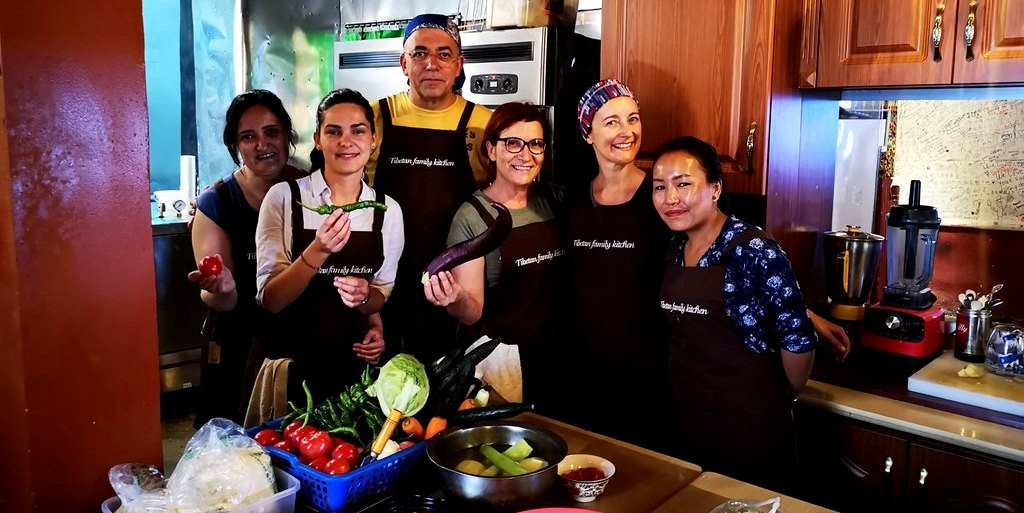
Key Features of Bhutanese Cooking Classes
Learn Traditional Recipes: Cooking classes typically focus on traditional Bhutanese dishes that are staples in local diets. Participants learn to prepare dishes such as:
-
Ema Datshi: This is the national dish of Bhutan, a spicy mix of chilies and the local cheese known as Datshi.
-
Momos: Tibetan-style dumplings that are a favorite in Bhutan, filled with either meat or vegetables.
-
Red Rice Pilaf: A nutritious dish that utilizes Bhutan's native red rice.
-
Jasha Maroo or Maru: Spicy chicken stew, which is a common Bhutanese dish flavored with ginger, garlic, and onions.
Use of Local Ingredients: Cooking classes emphasize the use of fresh, local ingredients, many of which are unique to Bhutanese agriculture such as Sichuan peppers, Bhutanese red rice, and various green, leafy vegetables. This not only enhances the flavor but also provides a deeper understanding of the local diet and agriculture.
Interactive and Hands-on Learning: These classes are usually hands-on, allowing participants to engage directly with the cooking process. This hands-on approach ensures that learners can replicate the recipes at home, bringing a taste of Bhutan to their own kitchens.
Cultural Exchange: Cooking with local chefs or home cooks provides a unique opportunity for cultural exchange. It allows participants to ask questions and hear stories about Bhutanese life, food, and traditions, making the experience enriching beyond just learning how to cook.
Meal Sharing: After cooking, participants often enjoy the meal they have prepared, which fosters a sense of community and shared experience. This meal often becomes a social event, resembling traditional Bhutanese family dinners.
Benefits of Taking Cooking Classes in Bhutan
-
Cultural Immersion: Food is a direct gateway to a country’s culture. By learning about the ingredients and techniques, participants gain insights into Bhutan’s cultural values and traditions.
-
Skill Development: Participants enhance their cooking skills and learn how to prepare unique dishes to add to their culinary repertoire.
-
Support Local Economies: By participating in cooking classes, visitors directly contribute to the local economy and support small businesses and artisans.
How to Join a Cooking Class in Bhutan: Travelers interested in taking cooking classes should consult with local tour operators like Relax Getaways. Many tourism packages now include culinary experiences as part of broader cultural tours. These classes are often available in Thimphu and Paro but can also be found in other parts of the country. Ensuring to book ahead can help secure a spot in these popular activities.
For Whom Are These Classes Suitable?: Cooking classes in Bhutan are suitable for anyone interested in food and culture, regardless of their cooking skill level. They are particularly appealing to those looking to bring home a unique and tasty souvenir—the ability to recreate Bhutanese culinary delights.
By participating in a Bhutanese cooking class, travelers not only learn how to prepare distinctive and delicious dishes but also take part in a meaningful cultural exchange that enhances their overall travel experience in Bhutan.
Rafting
Rafting in Bhutan offers an exhilarating blend of adventure and scenic beauty, set against the backdrop of the country's stunning Himalayan landscape. Bhutan's pristine rivers, originating from the high mountain glaciers, provide perfect settings for rafting adventures that cater to both beginners and experienced rafters.
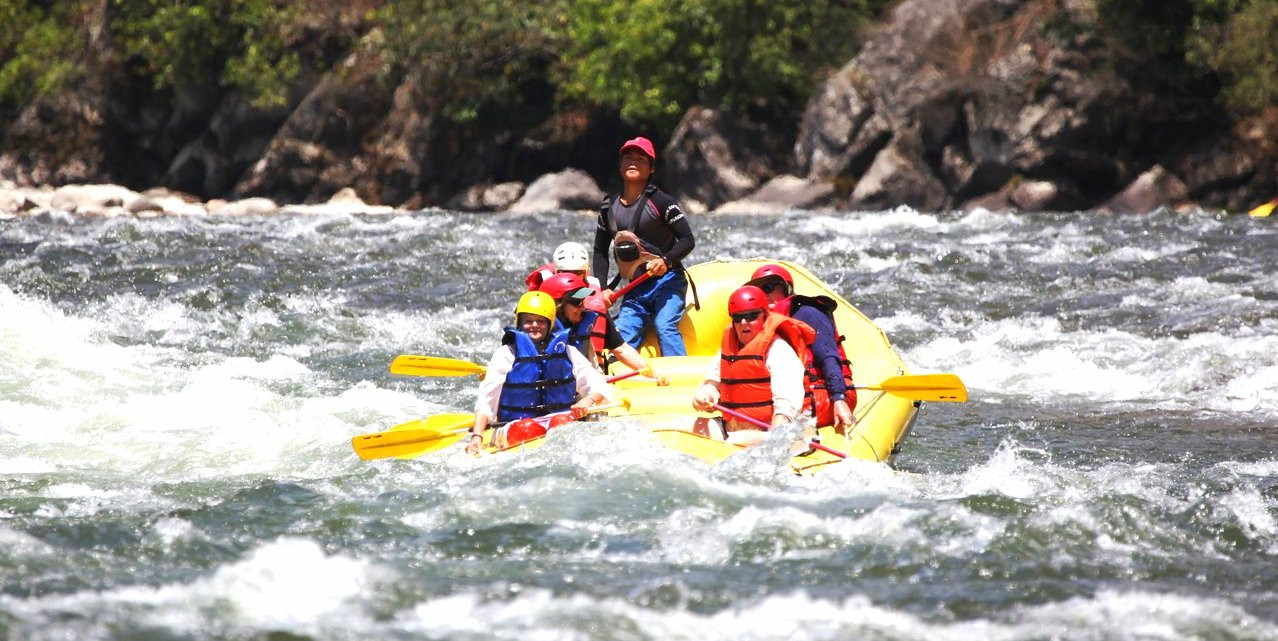
Popular Rivers for Rafting
-
Mo Chhu River: Located in Punakha Valley, the Mo Chhu River offers relatively gentle flows that are ideal for family rafting and those new to the sport. The river passes through the lush countryside with spectacular views of the Punakha Dzong, making it not just an adventure but also a cultural experience.
-
Po Chhu River: Also in Punakha, the Po Chhu offers more challenging rapids compared to the Mo Chhu and is suitable for those looking for a bit more excitement. The river provides a thrilling ride with more intense white water sections, surrounded by stunning natural beauty.
-
Paro Chhu River: Flowing through the Paro Valley, this river is suitable for moderate rafting experiences. It offers a good mix of mild to moderate rapids, along with scenic views of traditional Bhutanese architecture and lush landscapes.
What to Expect
-
Scenic Beauty: Rafting trips in Bhutan are as much about the landscapes as they are about the thrill. Rafters are treated to views of majestic mountains, dense forests, and remote monasteries.
-
Wildlife Sightings: The river banks often host a variety of wildlife, offering a chance to see birds like kingfishers, herons, and even the elusive white-bellied heron.
-
Cultural Elements: Some rafting trips can include stops at local sites like temples or dzongs, integrating cultural experiences with adventure sports.
Preparing for Your Rafting Trip
-
Safety: Safety is paramount in all rafting excursions. Participants are equipped with safety gear including helmets, life jackets, and sometimes wetsuits, depending on the water temperature.
-
Guides: Experienced and knowledgeable guides lead the rafting trips. They provide pre-trip safety instructions and are trained to handle emergencies, ensuring a safe and enjoyable experience for all rafters.
-
Fitness Level: While you don’t need to be extremely fit to enjoy rafting, a basic level of physical fitness is helpful, especially for navigating the more challenging rapids.
River rafting in Bhutan is an unforgettable experience that combines adventure, natural beauty, and a touch of Bhutanese culture, making it a must-do activity for visitors looking for something beyond the conventional tourist pathways.
Farm and Farm House Visits
Farm and Farm house visits in Bhutan offer a unique opportunity to engage directly with the rural lifestyle and agricultural practices that are at the heart of traditional Bhutanese life. These visits allow travelers to experience the authenticity of Bhutan's pastoral life, learn about organic farming techniques, and participate in the daily activities of a Bhutanese farm.
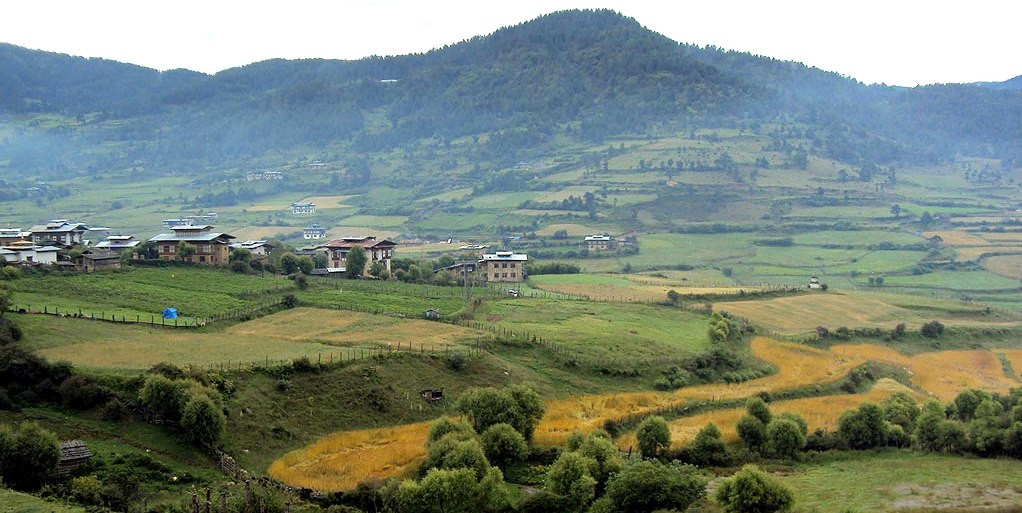
Highlights of Farm and Farmhouse Visits in Bhutan
-
Hands-on Agricultural Experience: Visitors can partake in various farming activities such as plowing fields with traditional wooden plows, sowing seeds, harvesting crops like red rice, buckwheat, and vegetables, or even picking fruit from abundant orchards.
-
Traditional Bhutanese Farmhouse Stay: Many farm visits include a stay in a traditional Bhutanese farmhouse. These houses are built in the classic architectural style and offer a cozy, welcoming environment. It’s a chance to live like a local, enjoying the warmth and hospitality of a Bhutanese family.
-
Organic and Sustainable Practices: Bhutan is well-known for its commitment to sustainability and organic farming. Guests can learn about sustainable agricultural practices that have been passed down through generations and understand the national goal of maintaining 100% organic farming.
-
Culinary Experiences: Participating in cooking traditional meals with fresh farm produce is a significant part of the farm visit. Guests can learn to cook local dishes using ingredients picked straight from the garden, providing a true farm-to-table experience.
-
Cultural Interaction: Interaction with farm owners and local villagers provides deep insights into the rural Bhutanese way of life. It's an opportunity to learn about local customs, traditions, and the daily challenges and joys of rural living.
-
Animal Husbandry: Visitors can also engage in animal husbandry practices, including milking cows, feeding livestock, and learning about the care of animals in a farm setting.
Benefits of Farm Visits
-
Educational Value: Both adults and children can learn about agriculture, sustainability, and rural lifestyles, making farm visits both educational and enjoyable.
-
Cultural Exchange: These visits foster a cultural exchange that enriches the travel experience, providing deeper understanding and appreciation of Bhutan’s community-centric way of life.
-
Relaxation: Being in nature and participating in farm life offers a peaceful retreat from the hustle and bustle of urban life.
Farm visits are an integral part of the eco-tourism offerings in Bhutan. They provide an authentic glimpse into the traditional life of Bhutanese farmers and offer a meaningful and enriching experience that goes beyond typical tourist activities. Whether you’re a family looking for a unique vacation experience, an individual seeking solace in nature, or an eco-conscious traveler wanting to learn about sustainable practices, a farm visit in Bhutan is an unforgettable adventure.
Hot Springs
Bhutan, with its serene landscapes and spiritual ambiance, is home to several natural hot springs (known locally as 'Tshachus') which are believed to have therapeutic properties. Visiting these hot springs is a popular activity among both locals and tourists, offering a unique combination of relaxation, healing, and an intimate experience with nature.
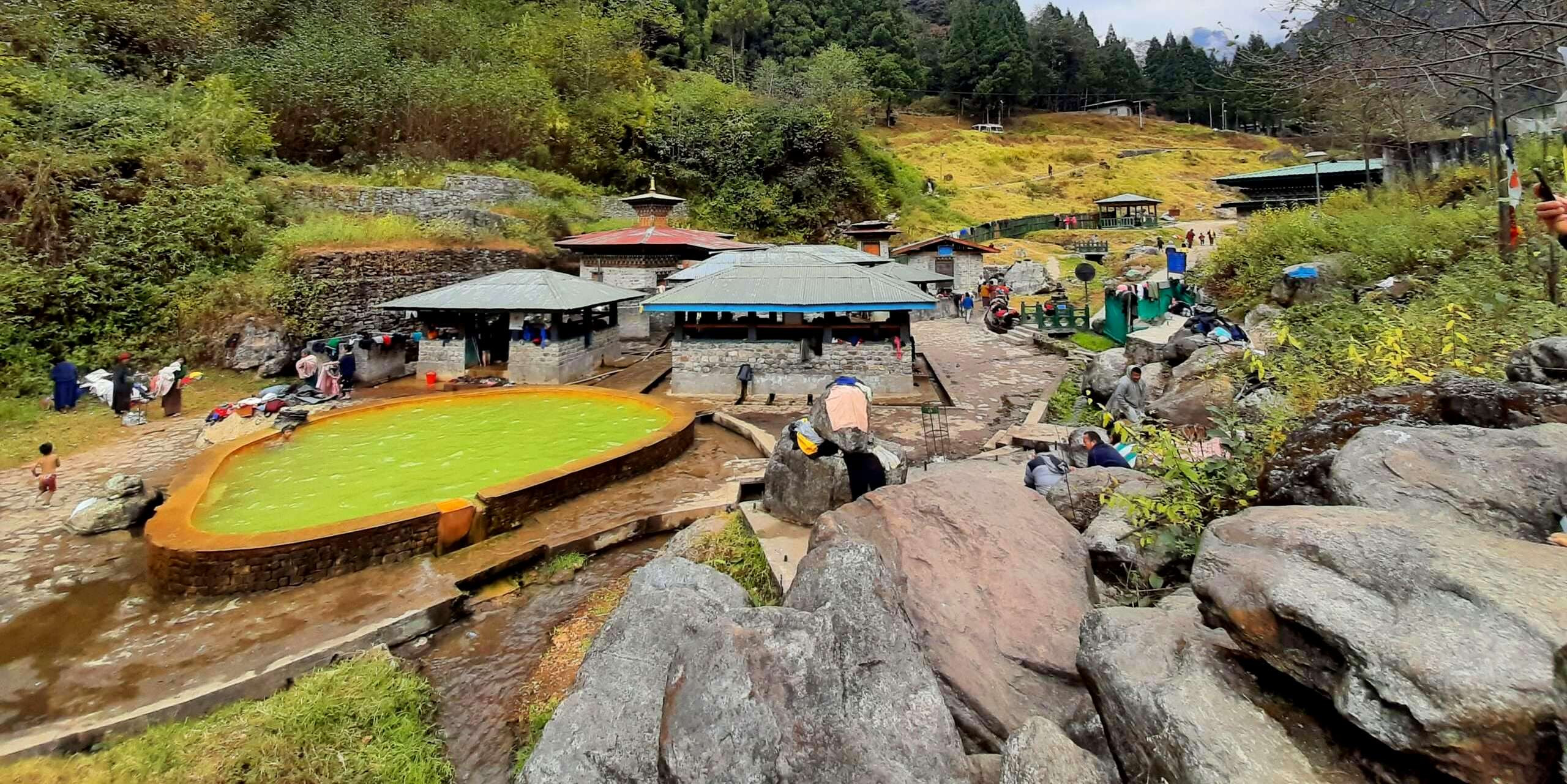
Key Hot Springs in Bhutan
-
Gasa Tshachu: Located in the northern region of Bhutan near Gasa Dzong, this hot spring is the most famous in Bhutan. Nestled alongside a river, the Gasa Tshachu is frequented by locals and tourists seeking relief from joint pains, arthritis, and other ailments.
-
Chubu Tshachu: Situated in the Punakha district, this hot spring is less crowded but equally therapeutic. The setting near the Pho Chhu River adds to its tranquil atmosphere, making it ideal for those looking for peace and quiet.
-
Dur Tshachu: Located in Bumthang, in central Bhutan, Dur Tshachu is set in a pristine forest area. It is known for its beautiful surroundings and the medicinal qualities of its waters, which attract those looking for both physical and spiritual healing.
-
Gelephu Tshachu: In the southern part of Bhutan, this hot spring is easily accessible and is popular among both Bhutanese and visitors from nearby Indian towns. It’s known for its large and clean pools, and is considered beneficial for skin diseases and other health issues.
Benefits of Visiting Hot Springs
-
Therapeutic Properties: The mineral-rich waters are reputed to have healing properties, helpful for skin diseases, musculoskeletal conditions, and neurological disorders.
-
Relaxation: Hot spring baths are incredibly relaxing, helping to reduce stress and promote mental well-being.
-
Cultural Experience: Visiting hot springs is a deep-rooted part of Bhutanese culture. Participating in this tradition offers insights into local customs and beliefs, particularly regarding natural healing practices.
Planning Your Visit
-
Best Time to Visit: The best time to visit Bhutan’s hot springs is during the winter months from October to March. During this time, the cooler weather makes the warm waters particularly inviting.
-
What to Bring: Ensure you bring bathing suits, towels, and toiletries. Some springs offer basic amenities, but it’s best to come prepared.
-
Etiquette and Tips: It’s important to respect local customs and cleanliness standards. Always clean yourself before entering the hot springs and maintain a quiet demeanor to not disturb the peaceful setting.
-
Accessibility: While some hot springs like Gasa Tshachu involve a trek to reach, others are more accessible. Check the location and accessibility before planning your trip, especially if traveling with elderly companions or those with mobility issues.
Visiting the hot springs in Bhutan is a must-do for those looking to unwind and experience a different facet of Bhutan’s rich cultural tapestry. Whether you’re seeking physical healing or simply a peaceful retreat amidst natural beauty, Bhutan’s hot springs offer a truly therapeutic escape.
Monastery Visits and Meditation
Bhutan, often referred to as the "Land of the Thunder Dragon," is steeped in spiritual tradition, with Buddhism playing a central role in the daily lives of its people. Visiting monasteries and engaging in meditation practices during a trip to Bhutan offers a profound insight into the spiritual practices and serene lifestyle that define this Himalayan kingdom.
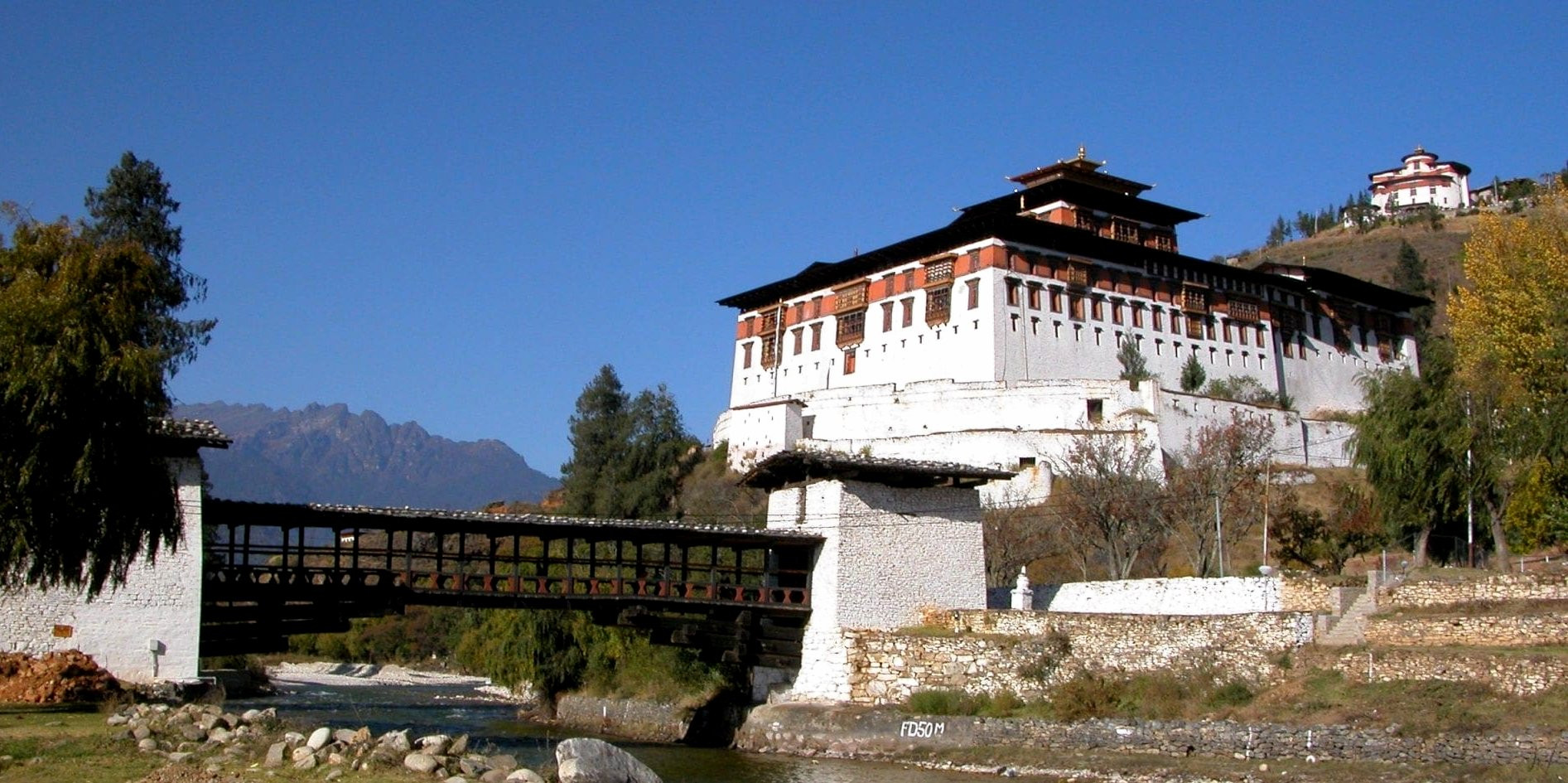
Key Monasteries for Visits and Meditation
-
Taktshang Monastery (Tiger’s Nest): Perched on a cliff about 900 meters above the Paro valley, Tiger's Nest is Bhutan's most iconic monastery. The site is associated with Guru Rinpoche, who is said to have flown here on the back of a tigress. The monastery offers not only a breathtaking view but also a place for deep meditation and contemplation.
-
Punakha Dzong: This majestic structure, located at the confluence of the Pho and Mo Chhu rivers, serves as both a monastic and administrative center. It's known for its beautiful architecture and significant historical importance. While the dzong itself is more of a touristic site, it often holds meditation sessions led by resident monks.
-
Gangtey Monastery: In the picturesque Phobjikha Valley, this monastery is an important center for Nyingmapa Buddhism. The tranquil surroundings and the presence of monks make it an ideal place for meditation and spiritual reflection.
-
Bumthang’s Kurjey Lhakhang: This sacred monastery is where Guru Rinpoche left his body imprint. Its serene environment and the spiritual aura make it an excellent spot for meditation.
Benefits of Monastery Visits and Meditation
-
Cultural Immersion: These visits provide a deeper understanding of Bhutanese culture, philosophy, and religious practices.
-
Spiritual Enrichment: Engaging in meditation in these sacred spaces can offer a sense of peace and spiritual growth, helping visitors to connect with their inner selves.
-
Historical Insight: Many monasteries are also historical landmarks, offering a glimpse into Bhutan’s past through their architecture and the stories associated with them.
Experience in Meditation
-
Guided Sessions: Some monasteries offer guided meditation sessions, which can be particularly beneficial for beginners or those looking to deepen their practice in a spiritually charged environment.
-
Personal Practice: For those who prefer solitude, finding a quiet corner within a monastery complex can provide a peaceful setting for personal meditation.
Planning Your Visit
-
Respect and Etiquette: Always show the utmost respect when visiting these religious sites. Dress modestly, speak softly, and follow all local customs and regulations.
-
Permissions: Some monasteries might have restrictions on access to certain areas or require special permission for longer meditation stays. It’s advisable to arrange these visits through a reputable tour operator who can handle the necessary permissions.
-
Timing: Consider visiting during off-peak hours or seasons to avoid crowds and have a more introspective experience.
-
Accommodations: Some monasteries offer accommodations for visitors looking to engage in longer meditation retreats. These can be a unique, immersive way to experience Bhutanese monastic life.
Monastery visits and meditation in Bhutan are more than just tourist activities; they are a gateway to understanding the profound spiritual foundation of Bhutanese society. Whether you are a seasoned practitioner or a curious traveler, these experiences can provide a unique perspective on life and spirituality in this Himalayan paradise.
Tips for Family Travel in Bhutan
Planning a family trip to Bhutan can be an exciting adventure, offering a blend of cultural immersion, natural beauty, and shared experiences that can enrich the bond between family members. Here are some essential tips to ensure a smooth and enjoyable family travel experience in Bhutan:
Plan with a Reputable Tour Operator
-
Bhutan requires all tourists (except citizens of India, Bangladesh, and the Maldives) to travel with a pre-arranged itinerary booked through a registered tour operator. Choose operators like Relax Getaways that specialize in family-friendly packages and can tailor the experience to accommodate the needs and interests of all family members.
Consider the Timing of Your Visit
-
Weather: Bhutan has distinct seasons, each offering different experiences. The best times to visit are during spring (March to May) and fall (September to November) when the weather is mild, and the skies are clear, ideal for outdoor activities and festival participation.
-
Festivals: Try to coincide your visit with local festivals such as Paro Tshechu or Thimphu Tshechu. These are great cultural showcases that can be enjoyed by all ages.
Choose Activities Wisely
-
Age-Appropriate Activities: Bhutan offers a range of activities, from hiking and trekking to cultural tours and wildlife watching. Ensure the activities are suitable for the age and fitness level of your children. For example, short nature walks and cultural sightseeing might be more appropriate for younger children, whereas older children might enjoy more challenging treks or river rafting.
-
Educational Opportunities: Incorporate educational elements like visits to monasteries, museums, and traditional arts and crafts workshops, where children can learn interactively about Bhutan’s culture and traditions.
Accommodation Choices
- Family-Friendly Lodging: Ensure that your accommodation is family-friendly, offering comfortable family rooms or interconnected rooms, child-friendly menus, and perhaps even childcare services.
Health and Safety
-
Altitude Awareness: Some parts of Bhutan are at high altitude. Take it slow and allow time for acclimatization to prevent altitude sickness.
-
Travel Insurance: Ensure that your travel insurance covers all family members and includes provisions for medical emergencies and evacuation.
-
Local Healthcare: Familiarize yourself with the locations of hospitals or clinics in proximity to your destinations within Bhutan.
Pack Appropriately
-
Clothing: Pack clothes suitable for layering, as temperatures can vary significantly between day and night. Include rain gear, especially if traveling during the monsoon season (June to August).
-
Essentials: Bring along any necessary medications, high-SPF sunscreen, insect repellent, and basic first aid supplies.
Respect Local Customs and Culture
- Educate your family about Bhutanese customs and etiquette. For example, dressing modestly, speaking respectfully, and removing shoes before entering religious sites are all important practices in Bhutan.
Stay Flexible
- Traveling with children often requires a flexible itinerary. Allow for downtime and be prepared to adjust plans based on how the day unfolds.
Document Preparation
- Ensure all passports are valid for at least six months beyond your planned departure date from Bhutan and check if visas are required for all family members.
By following these tips, you can look forward to a memorable and enriching family vacation in Bhutan, filled with adventure, education, and relaxation, all while immersed in the stunning natural beauty and rich cultural heritage of this unique Himalayan kingdom.
Best Time for Family Travel in Bhutan
Choosing the best time for family travel in Bhutan involves considering the weather, local festivals, and the types of activities you wish to engage in. Here’s a breakdown to help you plan your trip:
Spring (March to May)
-
Weather: Spring in Bhutan is delightful, with moderate temperatures and clear skies, making it ideal for outdoor activities. This is a great time for trekking, as the landscape becomes vibrant with blooming flowers, including the famous rhododendrons.
-
Activities: This season offers excellent opportunities for photography, bird watching, and enjoying the lush green environment. The Paro Tshechu, one of Bhutan's most important festivals, usually takes place in early April, providing a colorful cultural experience.
-
Considerations: Spring is considered one of the peak tourist seasons, so expect somewhat higher prices and more crowded attractions.
Fall (September to November)
-
Weather: Fall is another peak season for visiting Bhutan due to its mild weather and clear mountain views. The air is fresh, and the skies are usually clear, offering some of the best conditions for mountain trekking.
-
Activities: Fall is also festival season, with the popular Thimphu Tshechu and Wangduephodrang Tshechu taking place, giving families a chance to witness traditional mask dances and other cultural events.
-
Considerations: Like spring, fall sees a higher influx of tourists, so booking in advance is advisable to secure the best accommodations and services.
Winter (December to February)
-
Weather: Winter in Bhutan can be cold, but it also brings the advantage of fewer tourists. The southern parts of Bhutan are warmer, making it pleasant for visiting.
-
Activities: This season is ideal for bird watching, especially in the subtropical and tropical zones. The Punakha Dromche and Tshechu take place during this time, offering unique insights into the cultural heritage of Bhutan.
-
Considerations: Some high-altitude treks may be inaccessible due to snow, and temperatures in certain areas can be quite low, so it’s essential to pack appropriate winter clothing.
Summer (June to August)
-
Weather: Summer in Bhutan is the monsoon season. While the rain may deter some visitors, the landscapes are at their most verdant, and the waterfalls are spectacular.
-
Activities: The lush greenery and blooming flowers create beautiful scenery for those who don't mind the rain. It’s a good time for cultural tours and visiting museums, as outdoor activities might be interrupted by rain.
-
Considerations: Roads and trails can be slippery, and there are fewer tourists around, which could be a positive for families looking for a quieter experience.
General Tips for Family Travel:
-
Booking Early: Especially during peak seasons, it’s wise to book your flights, accommodations, and guided tours well in advance to ensure availability.
-
Preparation for Altitude: Bhutan’s altitude varies significantly from one region to another. Prepare for changes in altitude by planning a gradual ascent and ensuring your family is healthy enough for travel in higher altitudes.
-
Local Guidance: Utilizing the services of a local guide not only enriches your experience but also ensures you adhere to local customs and maximize your time efficiently.
Overall, the best times for family travel in Bhutan are during the spring and fall months when the weather is most conducive to a variety of activities and cultural experiences. However, choosing a time also depends on what you want to get out of your visit—whether it’s lush landscapes, cultural festivities, or quieter travel periods.
Bhutan offers a unique and enriching experience for family travel, blending cultural immersion, natural beauty, and adventure. From trekking to vibrant festivals, and from monastery visits to river rafting, Bhutan provides diverse activities that cater to all ages. Emphasizing sustainable tourism, a trip to Bhutan not only entertains but educates, promoting a deep respect for tradition and nature. Bhutan is an ideal destination for families seeking both adventure and a deeper connection with each other and the world around them.
FAQs for Family Travel in Bhutan
Q: What is the best time of year to visit Bhutan with family?
A: The optimal times to visit Bhutan with your family are during the spring (March to May) and autumn (September to November). These seasons offer pleasant weather, clear skies, and opportunities to participate in vibrant local festivals.
Q: Do children need special visas to enter Bhutan?
A: Yes, all foreign visitors, including children, require a visa to enter Bhutan. Visas are processed through a tour operator and must be arranged before arrival. Ensure children’s passports are valid for at least six months beyond the date of entry.
Q: Are there family-friendly accommodations in Bhutan?
A: Absolutely, Bhutan offers various family-friendly accommodations, including hotels with family rooms and resorts that provide amenities such as playgrounds, spacious gardens, and childcare services.
Q: What type of activities can families do in Bhutan?
A: Families can enjoy a multitude of activities, including hiking, bird watching, cultural tours, monastery visits, arts and crafts workshops, archery demonstrations, and festival participation. Gentle river rafting and exploring local markets are also excellent family activities.
Q: How should we dress during our visit to Bhutan?
A: It is important to dress modestly, especially when visiting religious sites. Clothes that cover the shoulders and knees are appropriate. Layering is recommended due to the changing weather conditions, particularly in mountainous regions.
Q: Is Bhutan safe for family travel?
A: Bhutan is known for its safety for travelers, including families with children. The country maintains a low crime rate and the locals are exceptionally hospitable and respectful towards visitors.
Q: What are the health care facilities like in Bhutan?
A: Urban areas like Thimphu and Paro have adequate health care facilities. However, remote areas may offer limited services. Carry essential health supplies and ensure you have travel health insurance that includes medical evacuation.
Q: Can we participate in local festivals during our visit?
A: Yes, visitors are encouraged to participate in local festivals, which provide a deep dive into Bhutanese culture and traditions. Plan your trip around festival dates to enhance your experience.
Q: Are there any specific cultural etiquettes we should be aware of?
A: In Bhutan, cultural respect is crucial. Some key etiquette includes removing shoes before entering religious sites, avoiding pointing feet at people or sacred objects, and seeking permission before taking photos, especially of locals.
Q: How can we make our travel in Bhutan environmentally friendly?
A: Support Bhutan’s commitment to environmental conservation by minimizing waste, conserving water, respecting wildlife and natural habitats, and adhering to established trails and regulations during outdoor activities.
For the Nepal tour, please click here.
If you are looking for different kinds of Nepal Tours or Trekking Packages, feel free to contact us.
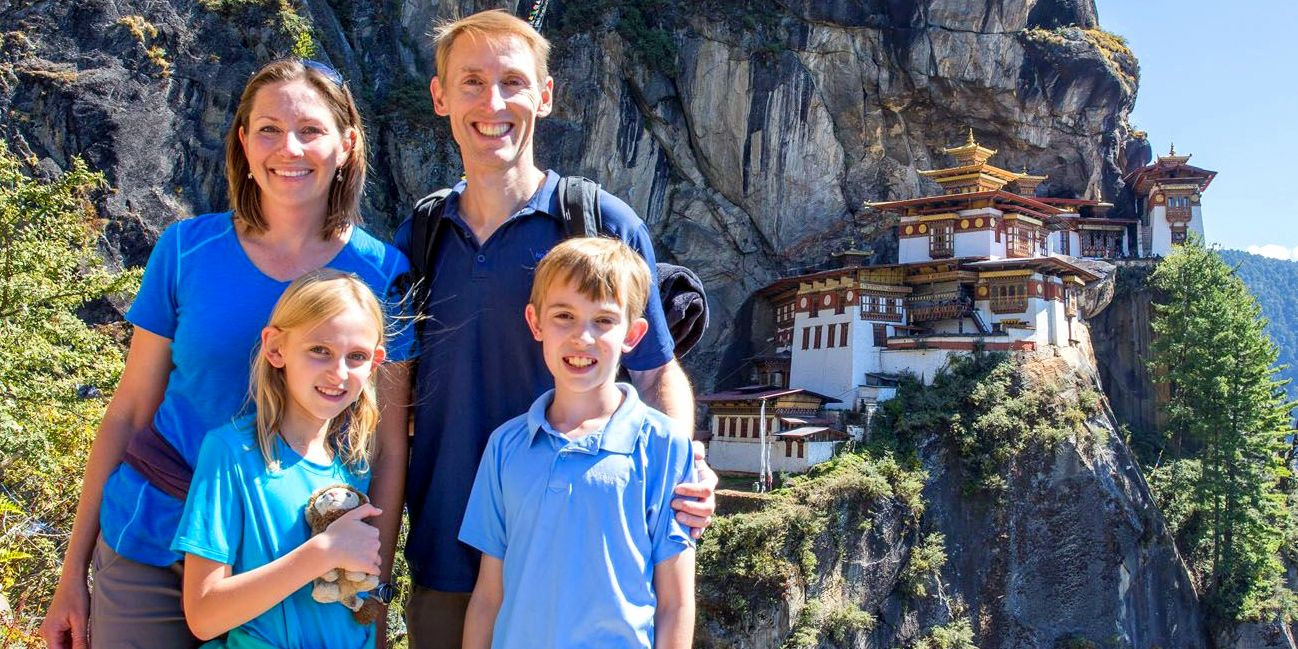

.jpg)










